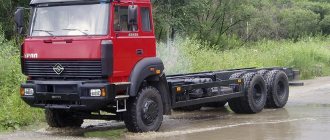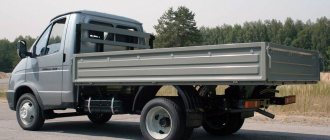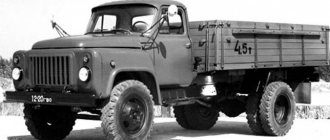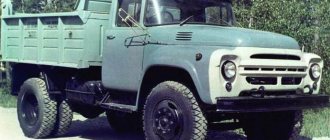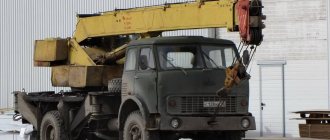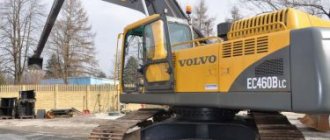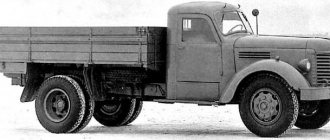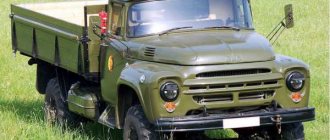Eastern European countries are currently the fastest growing market for the international company Volvo Trucks. Along with truck sales growing every year, the network of service stations is also expanding. More than seventy authorized centers have been opened throughout Russia, from Kaliningrad to Vladivostok, providing a full range of services for the maintenance and repair of Volvo buses and trucks. The modern Volvo Trucks model range is represented by five series, and the total number of modifications and configurations includes several hundred models of trucks for various purposes. The flagship of the Swedish corporation is the Volvo FH16 long-haul tractor. The FE and FL series vehicles have been developed for regional and intracity transportation. The FMX series of construction machines has been created specifically for use in heavy construction work. However, the FM series trucks can be called the most versatile vehicles for long-haul, regional and urban transportation with the highest profitability. Volvo Trucks' automotive production facilities are located in many countries around the world. With the grand opening ceremony of the Volvo plant in Kaluga in January 2009 with a design capacity of 15,000 trucks per year, serial production of trucks in Russia began. In the spring of the same year, the Ministry of Industry and Trade of the Russian Federation granted the plant's products the status of domestic products. The vehicles produced also include trucks of the FM line. The Kaluga plant became the first full-scale foreign production of trucks in Russia. Automotive components are supplied to the enterprise from both foreign and domestic manufacturers. Localization of production in Russia allows us to reduce the overall cost of production, which significantly increases competitiveness in the fight against such companies as Scania, DAF, Mercedes and MAN.
Purpose
The Volvo FM13 is a multi-purpose specialist for long-haul, regional and urban transport. Depending on the specific tasks, five types of cabins can be installed on the vehicle, both with and without sleeping places. As a result of the installation of highly comfortable Globetrotter cabins, FM series vehicles are in no way inferior in comfort to their FH line counterparts. For long-haul transportation over relatively short distances over flat terrain, by installing less powerful engines, it is possible to significantly save fuel and increase profitability.
Tipper versions of the Volvo FM13 are used for transporting all kinds of cargo during the construction of buildings and roads, in various industries, and in the agricultural sector. Bodies with awnings, vans, and tanks for transporting industrial and food liquids are mounted on the vehicle chassis. A wide range of fire fighting vehicles and utility vehicles are based on the Volvo FM13. Cranes and manipulators, drilling rigs, platforms for transporting passenger cars, equipment used in road construction - this is not a complete list of devices installed on the Volvo FM13 chassis.
Areas of application of trucks
Mining dump trucks are capable of solving a wide range of tasks. But since their operation is associated with certain difficulties, the following work is most often performed with their help:
- carry out quarrying;
- transport bulk and bulk materials;
- deliver quarry masses to their destination.
Volvo FMX 8×4 dump truck
Also, mining dump trucks produced by the Volvo concern are indispensable when performing construction work and logging.
Modifications
The configuration of FM series vehicles may vary. There are cars with a wheelbase from 3 to 6.7 meters to choose from. Wheelbase options from 4x2 to 8x4 with different types of suspensions and axle characteristics allow you to assemble a car of the desired configuration. Among the latest developments from Volvo Trucks are five-axle versions with a 10x4 wheel arrangement. If necessary, fuel tanks can be installed on any side, and the position of the tool boxes and the AdBlue tank can also be changed.
Depending on the purpose, FM series vehicles are equipped with engines of various powers, automatic, robotic or automatic transmissions, and axles of various designs. During operation, the height of the chassis and other parameters may change, expanding the operational capabilities of the vehicle. The first generation of the FM series consisted of three cars: FM7, FM10, and FM12. They were equipped with engines of 7.3 liters, 9.6 liters, and 12.1 liters, respectively. The car was also assigned a digital index based on its engine size. The FM series has been constantly improved and has undergone several major upgrades. In 2010, new D13C engines with power from 380 to 500 hp began to be installed on cars in the line. The third generation of Volvo FM trucks, the production of which began in 2013 and continues to this day, is equipped with two types of turbocharged diesel engines with a volume of 10.8 and 12.8 liters. Volvo FM13 cars are equipped with D13K inline sixes that meet Euro 6 environmental standards.
Specifications
Volvo FM13 can be roughly compared to a car designer, providing endless possibilities for choosing the required configuration. All power elements of the machine are attached to a high-strength frame made of chrome-molybdenum steel. The frame behind the cab has a uniform width of 850 mm and a flat surface, making it easy to install the superstructure. The chassis is easily adaptable to a dump truck, timber truck, tanker truck, or car transporter. In traffic, the Volvo FM13 is easily recognizable by Volvo's powerful aerodynamic design.
The cabin features V-shaped headlights and a bold grille. The cars are equipped with 9 types of axles, various types of suspensions and brakes. Depending on the type of suspension, tire size and frame types, Volvo FM13 truck tractors with 4x2 and 6x6 wheel arrangements offer five options for the height of the coupling device from 810 to 1200 mm.
Trucks with an 8x4 wheel arrangement have four loading height options from 850 to 1200 mm. To increase ground clearance, straight front axles can be installed, and double axles can be installed to increase load carrying capacity. The FM series can be equipped with various types of cabins, including the modernized Globetrotter (L2H2) with places for a comfortable overnight rest for two people. All-wheel drive versions with a 4x4 and 4x6 wheel arrangement are excellent for work related to the delivery of construction materials from quarries and other places where there are no paved roads. As a rule, these modifications are equipped with manual transmissions with 12 synchronized forward gears, as well as 2 unsynchronized reduction gears and 4 unsynchronized reverse gears. 9-speed manual gearboxes with a range-shifter are also installed.
To transmit torque from the engine to the gearbox, single-disc or double-disc sliding clutches are installed. Construction truck versions of the Volvo FM13 are also often equipped with 5- or 6-speed Powertronic planetary gearboxes. In addition to manual and automatic transmissions, FM series trucks are equipped with a 12-speed gearbox with a divider and electronically controlled range I-Shift. One of the following software packages may be supplied with the gearbox:
- Base;
- Distribution and construction;
- Long-distance transportation and fuel economy;
- Road trains of high gross weight.
To ensure the drive of equipment installed on the Volvo FM13 chassis, the vehicles are equipped with 10 types of independent and clutch-dependent power take-offs.
Chassis are supplied from the factory with extra-high (1200 mm), high (1000 mm), low (850 mm) and ultra-low (810 mm) heights. The load values for the front axles are:
- For tractors - 7.1, 8, and 9 tons;
- For truck chassis - 7.1, 7.5, 8, and 9 tons;
- For truck chassis with double axles 8x2 and 8x4 – 16 tons.
Depending on the Volvo FM13 modification, cars can be equipped with steel or aluminum fuel tanks with a capacity of 160 to 810 liters. The maximum fuel volume for a 4x2 tractor is 1380 liters.
High safety when braking for cars in the series is ensured by electronically controlled disc brakes and a directional stability system. As an alternative, drum mechanisms with Z-shaped expansion cams can be installed. The wheel brakes and VEB auxiliary engine brake work together to reduce heat generation and brake lining wear. The VEB engine brake provides high braking power throughout the entire operating range of the engine.
Volvo FMX 6×4 dump truck
The Volvo FMX 6×4 is a large-capacity dump truck, the purpose of which is to transport bulk, bulk and other types of cargo on roads of all categories and off-road, including under harsh operating conditions... The car was born in the spring of 2013 - its premiere took place at international specialized exhibition "Bauma", held in Munich.
By default, the Volvo FMX 6×4 is equipped with a day cab with an attractive exterior design and an ergonomically thought-out interior, organized according to a two-seater layout.
The length of the dump truck is 7958 mm, its height (at cabin level) does not exceed 3123 mm, and its width is 2490 mm (not counting external mirrors). Between the first and second axles, the car has a wheelbase measuring 3400 mm, and between the second and third axles – 1370 mm.
note
When loaded, the Volvo FMX 6×4 weighs about 14,000 kg, and its load capacity is 27,000 kg. The total weight of the truck does not exceed 41,000 kg, of which 9,000 rests on the front axle, and 32,000 kg on the rear bogie.
As standard, the “Swede” is equipped with a dump body with a useful volume of 16 cubic meters, made of high-strength steel, with a heating system through exhaust gases, an awning with a twisting mechanism and a ladder on the left side.
“Under the cabin” of the Volvo FMX 6×4 there is an in-line diesel “six” D13C with a displacement of 12.
8 liters with Common Rail direct injection, turbocharging, intercooling and 12 valves, the potential of which is 420 horsepower at 1400-1900 rpm and 2100 N•m of rotational potential at 1000-1400 rpm.
The engine works in conjunction with a 14-speed manual transmission with two low gears, a dry double-disc clutch with a diameter of 400 mm and a 6x4 wheel arrangement with lockable cross-axle and center differentials.
The Swedish dump truck is based on a powerful spar-type steel frame, to which the cabin is attached via a mechanical suspension.
“In a circle” the car has a dependent suspension system - parabolic springs and anti-roll bars of normal stiffness are used both front and rear.
The truck flaunts an electronic brake system with drum devices on all wheels, hydraulic power steering and a 415-liter D-shaped fuel tank.
On the Russian market, the Volvo FMX 6×4 dump truck in 2022 is sold at a price of ~6.5 million rubles.
The car is standardly equipped with: a day cabin, a driver's seat with heating and air suspension, two electric windows, heated and electrically adjustable exterior mirrors, a digital tachograph, air conditioning, a sunroof, cruise, ABS and a bunch of other modern equipment.
large-capacity dump trucksReviews
Source: https://truck.ironhorse.ru/fmx-6×4-dump.html
Features and operation
The third generation Volvo FM13 is the brainchild of the era of mass electronic technology. All of them are designed to ensure high operational safety, comfortable conditions for work and rest of the driver and passenger, as well as improve the economic efficiency of the vehicle. All necessary information about the status of the truck systems is constantly displayed on the driver’s display. The functions of all on-board electronic systems are optimized by the Volvo TEA electronic architecture. There is a diagnostic socket for checking and debugging the system. The total number of electronic systems installed on Volvo FM13 cars can reach three dozen. These include:
- ABS – control of the anti-lock drum brake system;
- TPN – tire pressure monitoring system;
- EBS – regulates disc brakes, including ESP stability control system;
- BBM – body performance monitoring system;
- Audio – an audio system that regulates many parameters, including the volume of audio content depending on the noise in the cabin and engine speed;
- ECS – air suspension control system;
- ACC – adaptive cruise control. The latest generation systems provide higher braking effect, using wheel brakes to maintain a safe distance;
- Hill Start Aid – helps when starting on an incline.
With the improvement of the FM model range, the further trend towards the introduction of new systems and mechanisms continues. Constant work is being carried out to improve the performance characteristics of power plants.
